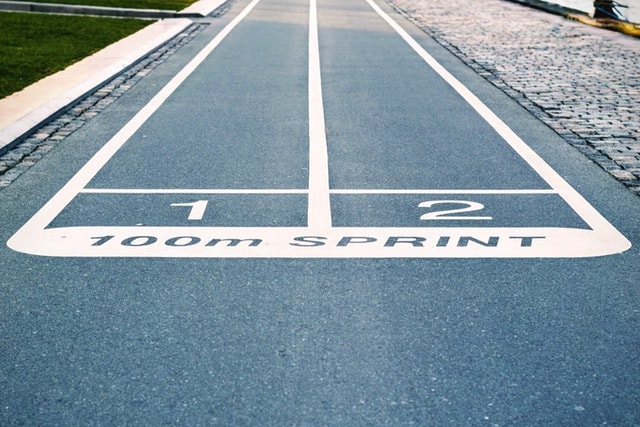Whether you have a bintang belly that has blown out of control, stored too many moroccan tagines, developed lazy office eating habits or have just found surfing alone is not helping you stay in shape (perhaps you do not have the luxury of surfing as much as you would like), this post will help you out.
First and foremost, nutrition and the nature of your lifestyle will be paramount in helping you trim down and reach your athletic potential – read my previous post Health Foundations for Surfers. Second to addressing nutrition and lifestyle, we will talk about specific, effective yet simple workouts for the biggest fat loss effects.
For years the fitness industry harked that uber long sessions of cardio was key to fat loss. Today you will still see many women particularly (yet men also) in the gym, slogging it out for hours on the treadmill, bikes or cross-trainers with the same intense desire to lose that stubborn weight that has hardly shifted since commencing their cardio program months or even years before. Why isn’t cardio the most effective exercise for fat loss and the maintenance of fat loss?
Aerobic exercise raises your metabolism up to 12 hours after exercise. High intensity sprints or resistance exercise (using weights) raise the metabolism up to 48 hours (really intense weight lifting up to 72 hours).
The body becomes more energy efficient with lower intensity aerobic exercise, so you end up burning less calories next time you do that exact same 5km on the treadmill.
Loads of aerobic exercise stimulates the production of stress hormones, which break down tissue, including muscle. Less muscle leads to a lowering of your metabolism.
Long distance athletes are skinny, but have more body fat and less muscle mass than a sprint athlete since the stress hormones break down muscle as well as fat. If you run for long distances you will still be leaner than if you did not exercise at all, but in comparison to a sprint athlete, you are a skinny-fat person.
At the time of being personally involved in an Exercise Science study at Sydney University where we compared the difference between intermittent sprinting and continuous exercise at a lower intensity, we came up with the following observations;
1. Three times more body weight loss was achieved for the sprint group, while performing only around half the total volume of exercise.
2. The higher intensity sprint training yields a greater oxygen consumption (during and after exercise), greater heart rate response, higher levels of circulating catecholamines, burns more energy per unit time, raises metabolism for longer, and recruits a higher percentage of muscle fibres within the working muscle.
3. For the same amount of external work completed by both study groups, the sprint training came out as energy inefficient in comparison, which here is a good thing.

SOLID FAT BURNING WORKOUT – OUTDOOR
Personal instruction highly recommended (Advanced)
A1. 1 set of TABATA SPRINTS on grass or soft sand; 20 second sprint, 10 second rest; repeat 8 times. (Insanely harder than you think). Rest 3-5 min.
A2. SANDBAG THROWS; fill up a sandbag with about a quarter to a third of your own body weight (men can start heavier). Place your feet just wider than hip width close to the bag. Squat down, bend from your hips, grab the bag and clean it up to catch it under your forearms, keeping your back straight and chest lifted. This action should come from your legs and your hips driving forward, keeping your core braced to protect your spine. Once caught under your forearms, immediately toss the bag over one shoulder, again bracing your core to protect your spine. Run around and repeat on the other side. Toss 8 total (4 each side). Rest 3-5 min. You may finish your workout here or you may chose to complete one more set (however one set is usually enough).
SOLID FAT BURNING WORKOUT – IN THE GYM
Personal instruction highly recommended (Advanced)
A1. SUMO DEADLIFT
Choose a weight that you can lift 4-6 times with good technique (this will be heavy) and perform 4-6 reps, 3-4 sets. You want a natural curve in your spine at the bottom of the lift (resist the urge to round out your back), and you want a straight back at the top of the lift (resist the urge to overarch your lower back). Warm up with lighter weights until you get to your chosen weight.
1. Step your feet wide under the bar so that the bar is positioned mid foot (you can see equally your front and back part of the foot either side of the bar). Check your feet are lined up evenly and you don’t have one foot further forward than the other.
2. Place your hands on the bar, shoulder width apart, directly down from your shoulders. Your arms should be vertical (sit back more if your shoulders are moving in front of your hands).
3. Turn your feet turned out up to 15 degrees and keep your knees pointing out over your toes.
4. Keep your hips high (think of the hip forward motion leveraging the weight up rather than squatting the weight up by using the legs).
5. Tense your core and glutes as you lift the bar in a vertical path, usually meaning you need to sit back more and quickly extend your hips to the bar once the bar is above your knees. Main cues while you lift are; Lift your chest, pull your shoulders back, tense your core and tense your glutes to the top.
6. After a short pause at the top (a couple of seconds) reverse this order to sit your hips back again, brace the core, keep your shoulders open and spine neutral as you lower the weight with control.
For videos and instruction on how to do a sumo deadlift plus a variety of other traditional lifts (conventional deadlift, back squat, front squat, military press, pull-up, bench press), Surf Strength & Conditioning online coaching will teach it all, including mobility, prep-work and assistance lifts.
A2. DUMBELL CLEAN TO OVERHEAD PRESS
- Place your feet just wider than hip width apart, feet turned out slightly.
2. Keep your back straight, hips and shoulders level and knees turned out equally as much as your toes. Squat down with good form to pick up a dumbbell.
3. Use hip drive to lift the weight up (extend your hips using your glutes and hamstrings to stand up, keeping your spine straight and core braced).
4. The dumbell should move close to your body as you stand up which enhances efficiency of movement, resting on the front, soft part of your shoulder (anterior deltoids).
5. Keep your core engaged and your spine straight as you press the dumbbell overhead.
6. Return the dumbbell to your shoulder and then reverse back to the floor, making sure your keep excellent form.
Aim for 3-8reps X 3-4 sets.
A3. TORSO / LANDMINE ROTATION
- Secure one end of a barbell against a wall and hold the other end up.
- Keeping your spine neutral (glutes engaged, chest open, shoulders back, core tight), rotate the barbell (keeping the arms straight) to the side as you pivot your feet to end in a lunge. The barbell should be resting for a second on the upper thigh before explosively bringing it back to the centre with a hip and core action. Your arms should not get tired.
- Use your hips and core to bring the bar back to the centre, rather than trying to crank your lower back. Conservatively add weight if need be.
- Complete 10-12 reps total, alternating sides X 3-4 sets.
These A2 and A3 exercises are also taught at Surf Strength & Conditioning.
These workouts will not take you a long time to complete but they are intense so avoid overdoing it on the volume. Performing once per week of either the outdoor or indoor workout is enough, in combination with you surfing and other activities such as lighter weight training, bike-riding, swimming, rock-climbing, dancing, football, etc.
As stated at the start of the post, for fat loss your nutrition and stress management is top priority. Stress can be anything from finances to digestion to food chemicals to how well you’re sleeping. Cortisol production is a major factor in making your body horde that fat. Connect with what is stressing you out.
Get an assessment by a medical or exercise professional before commencing any high intensity or advanced weight training programs. This includes the exercises suggested above!
Choose full body movements and keep the weights heavy (under supervision with strict form).
Change your program every 4-6 weeks. This could even be as simple as changing from a wide to a narrow squat stance, or changing the tempo of your lift, etc. The body gets efficient so keep changing the stimulus to avoid plateaus.
Check out online surf training for balanced, effective training programs.
